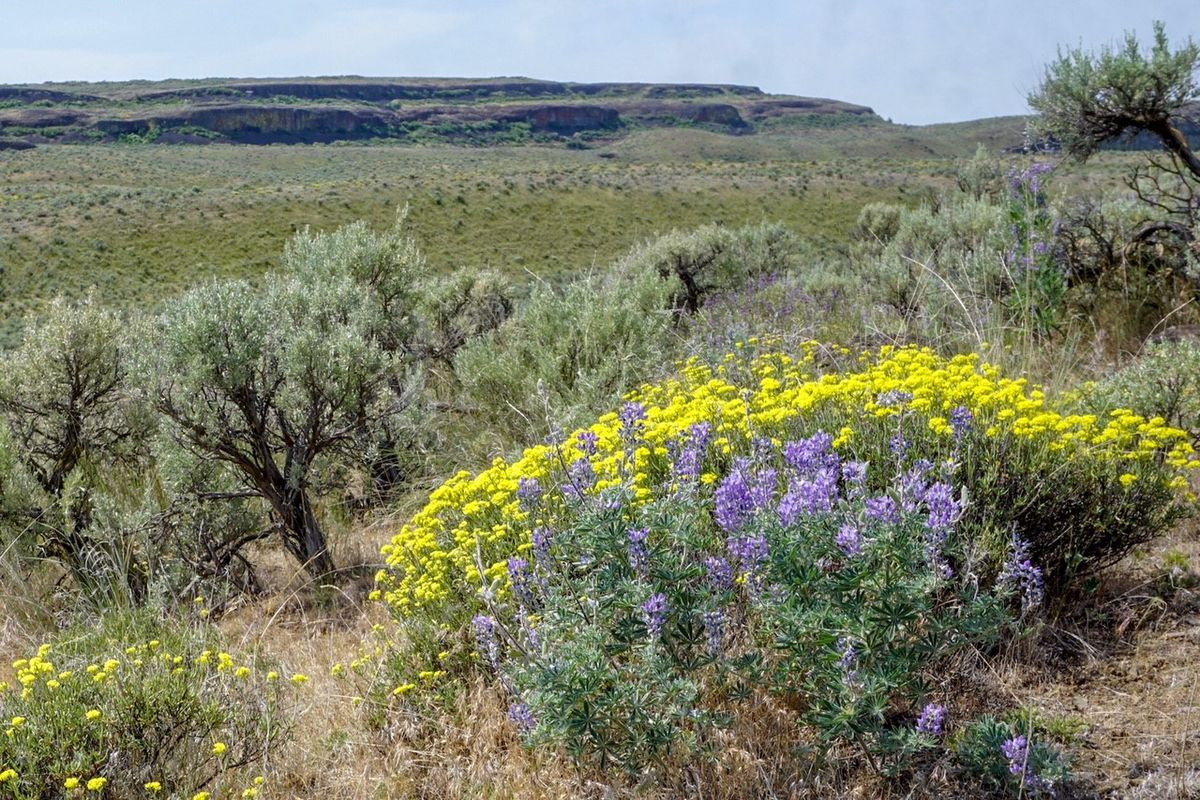State video highlights underappreciated, embattled Washington shrub-steppe

Driving by at 60 mph, it looks like little more than a dry blur.
Washington’s eastern desert.
But if you stop and look, there is a smorgasbord of life between the Cascades and Spokane: wildflowers, golden eagles, mule deer, burrowing owls, too many grasses to count and, of course, shrubs.
All told, more than 200 species of birds, 30 species of mammals and numerous species of reptiles, amphibians and insects live in and depend on Washington’s shrub-steppe habitat.
“When you put yourself down at the level of that landscape, you are going to see a forest, it’s just going to be a different type of forest,” Washington Department of Fish and Wildlife research scientist Michael Schroeder said in a video released by the agency this week.
The 12-minute video highlights the beauty and complexity of Washington’s shrub-steppe habitat, a landscape often overlooked for the dramatic peaks and deep valleys of the Cascades.
“It’s not quite like you are, you know in the big forest where it’s more obvious what the beauty is,” said Jay Kehne, Conservation Northwest’s sageland lead in the video. “It just takes some time to appreciate.”
The video comes out of a collaboration between Conservation Northwest and WDFW. It features WDFW research scientist Schroeder, Kehn, WDFW commissioner Molly Linville and Emily Washines, a tribal historian.
“This land holds our history,” Washines said in the video. “Our survival has meant understanding this land the resources and what they can offer.”
But not all is well.
Eastern Washington is the northern end of the “Sagebrush Sea” – an expanse of shrub-steppe habitat that once sprawled across much of the American West.
Often referred to as rangeland, that expansive habitat has shrunk substantially.
At one point, there were 10.4 million acres of shrub-steppe in Eastern Washington, but when European settlers arrived they cleared much of that historic range for farming and ranching. An estimated 20% of the original 10.4 million acres remains.
But the most pressing threat is fire, according to WDFW biologists. While fire has always been a natural part of the shrub-steppe ecosystem, the proliferation of invasive nonnative grasses – like cheatgrass – has worsened the impacts of fires.
Cheatgrass, in addition to providing little nutrition to native wildlife, is more prone to burning, contributing to a more frequent and severe fire season.
“It’s a vicious cycle,” said Scott Downes, a WDFW habitat biologist for Region 3 based in Yakima. “Historically, we would have had a cool fire. Bunch grasses, they have space between. They don’t burn very well. We’d lose a little sagebrush, it would be a patchy fire.”
No more.
That became clear this summer when Eastern Washington blazes consumed roughly one- half-million acres of shrub-steppe habitat critical to species from amphibians to mule deer from Yakima north to Brewster and the Colville Indian Reservation.
Fires killed half of the remaining Columbia Basin pygmy rabbits.
Primary recovery areas for endangered pygmy rabbits were devastated in the Sagebrush Flat Wildlife Area of Douglas County.
Fires also burned prime habitats for the short-eared owls, sage thrashers, sagebrush sparrows, loggerhead shrikes, sagebrush lizards, pygmy short-horned lizards, jackrabbits, Washington ground squirrels, badgers and the recently reintroduced pronghorns.
Greater sage-grouse, a state-listed threatened species, took a particularly hard hit. While the damage isn’t clear yet, it’s possible half of the state’s approximate 700 sage-grouse also died this summer, Downes said.
The WDFW commission is considering whether to upgrade the sage-grouse listing status.
At the same time, agricultural and housing developments have fractured shrub-steppe habitats.
All of this gives the video – some of which was filmed during the fires – more urgency.
“I believe this will be a valuable tool for outreach on Washington’s shrub-steppe, and the need for continued collaboration between agencies, organizations and communities to protect and restore it,” CNW’s spokesman Chase Gunnell said in an email.
Because of the vastness and interconnectedness of the habitat, conservation requires landowners, government agencies, tribes and individuals to all work together.
While that can be an overwhelming task, Downes emphasizes the importance of all kinds of help, including pulling weeds and replanting burned areas, no matter how small.
“Even the stuff that is 100 feet wide in between crop circles, sometimes that’s how animals get to the big patches back and forth,” he said. “We need the all-hands-on-deck approach right now.”